Abstract
A wind-borne plume of sex pheromone from a female moth or a synthetic source has a fine, filamentous structure that creates steep and rapid fluctuations in concentration for a male moth flying up the plume's axis. The firing rates from single antennal neurons on Agrotis segetum antennae decreased to nearly zero within seconds after the antennae were placed in a pheromone plume 70 cm downwind of a high-concentration source known from previous studies to cause in-flight arrestment of upwind progress. In a separate experiment, the fluctuating output from chilled neurons on Grapholita molesta antennae became attenuated in response to repetitive, experimentally delivered pheromone pulses. The attenuation was correlated with a previously reported higher percentage of in-flight arrestment exhibited by moths flying at cooler compared to warmer temperatures. These results indicate that two peripheral processes related to excessive concentration, complete adaptation of antennal neurons, or merely the attenuation of fluctuations in burst frequency, are important determinants of when upwind progress by a moth flying in a pheromone plume stops and changes to station keeping. Also, adaptation and attenuation may affect the sensation of blend quality by preferentially affecting cells sensitive to the most abundant components in airborne pheromone blends.
Full text
PDF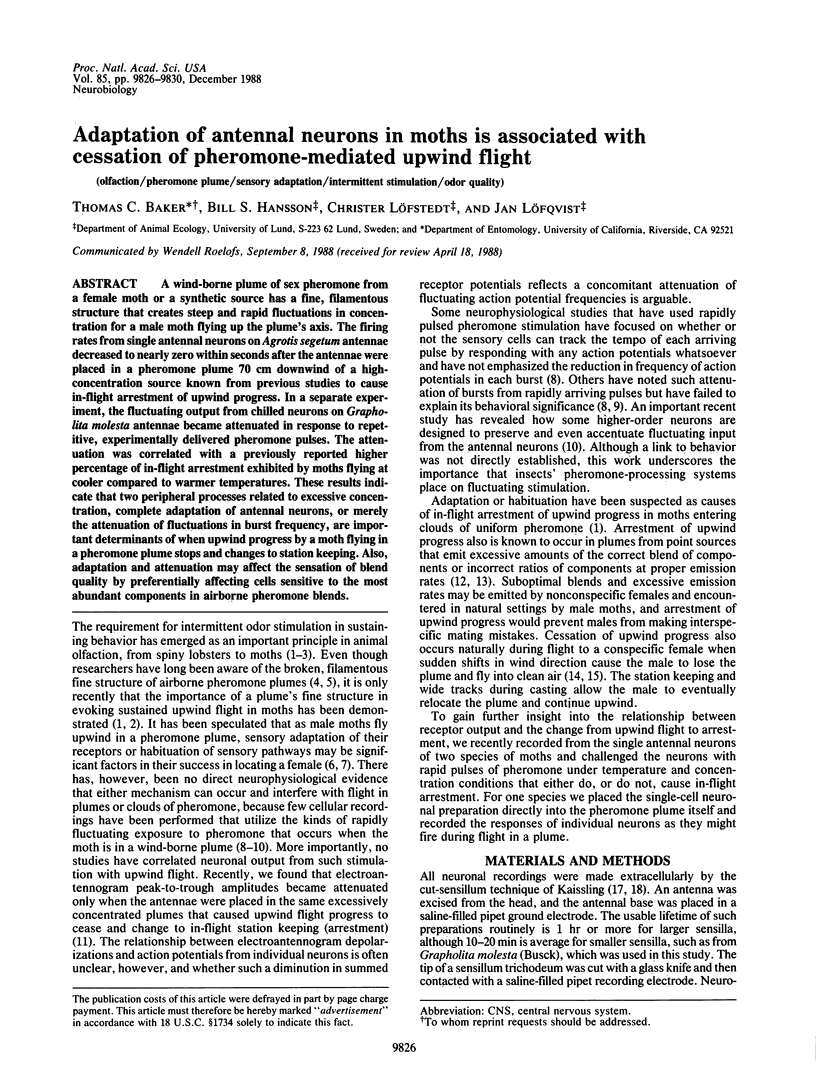
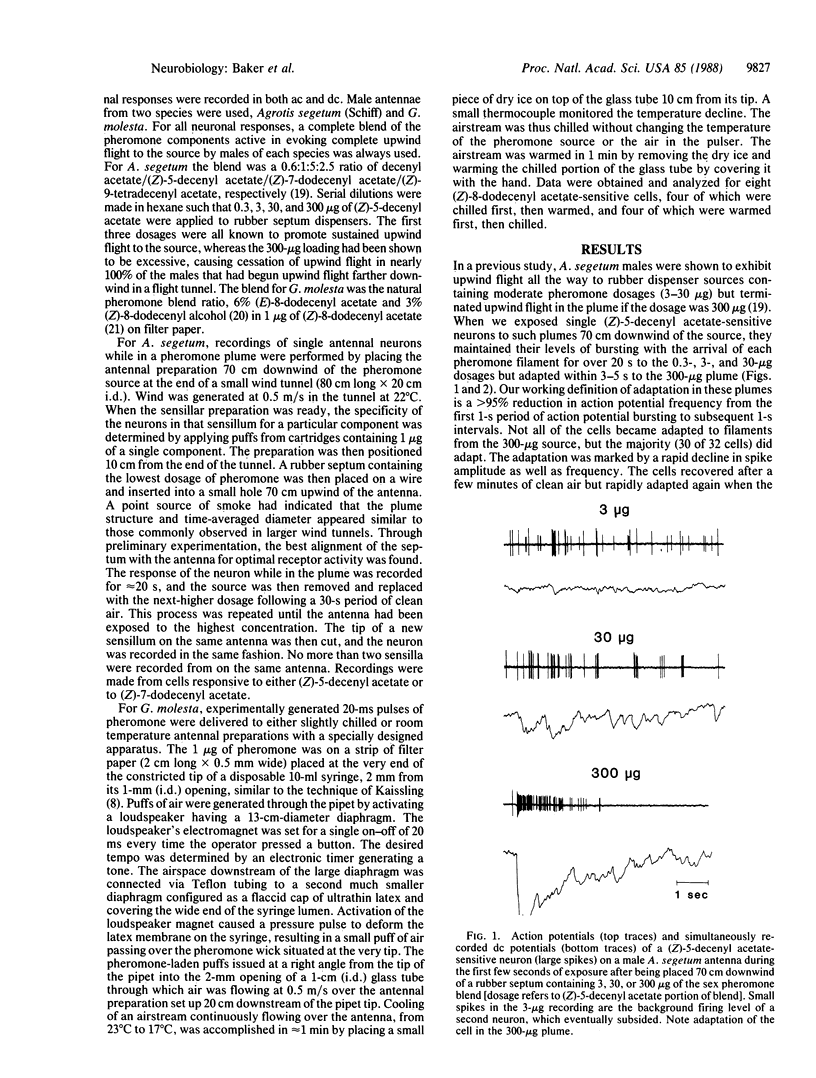
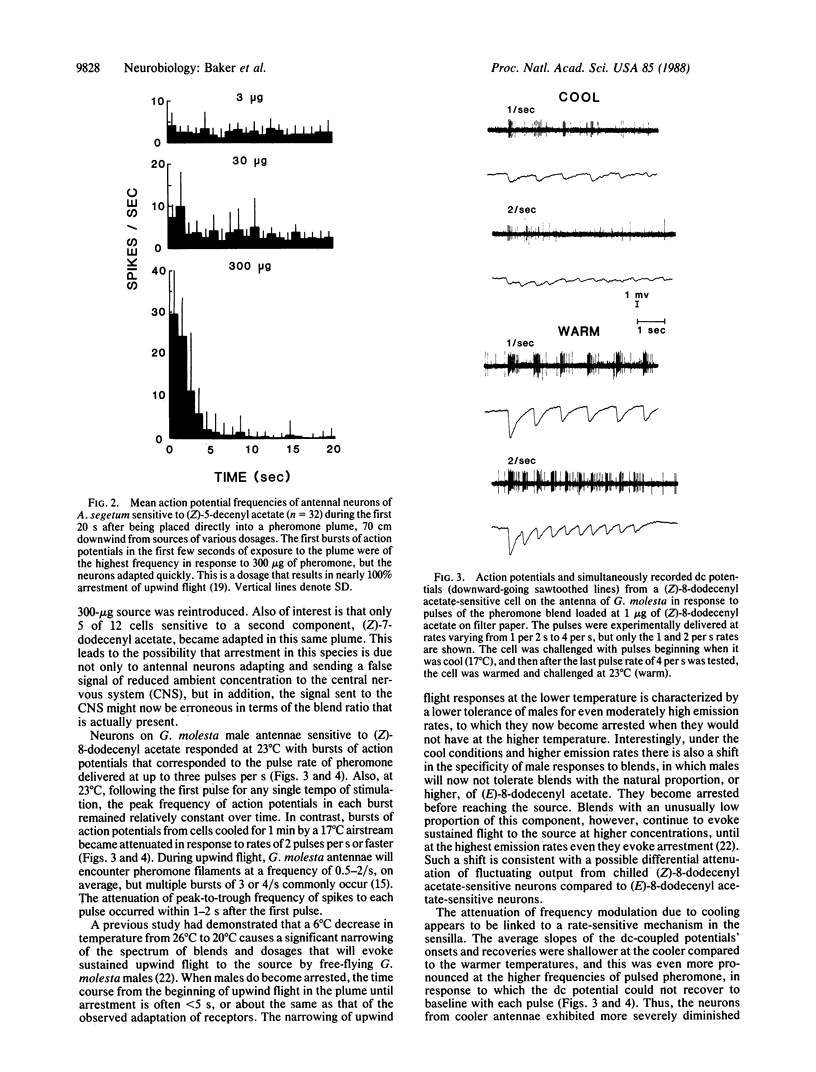
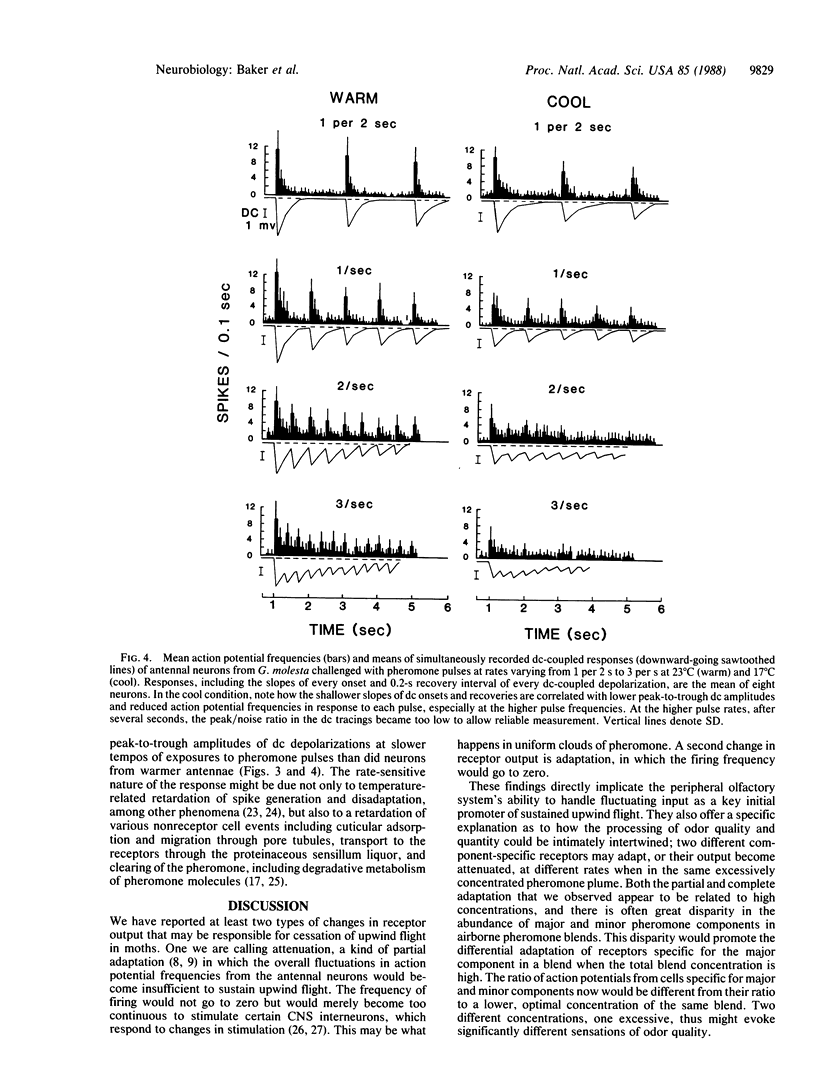
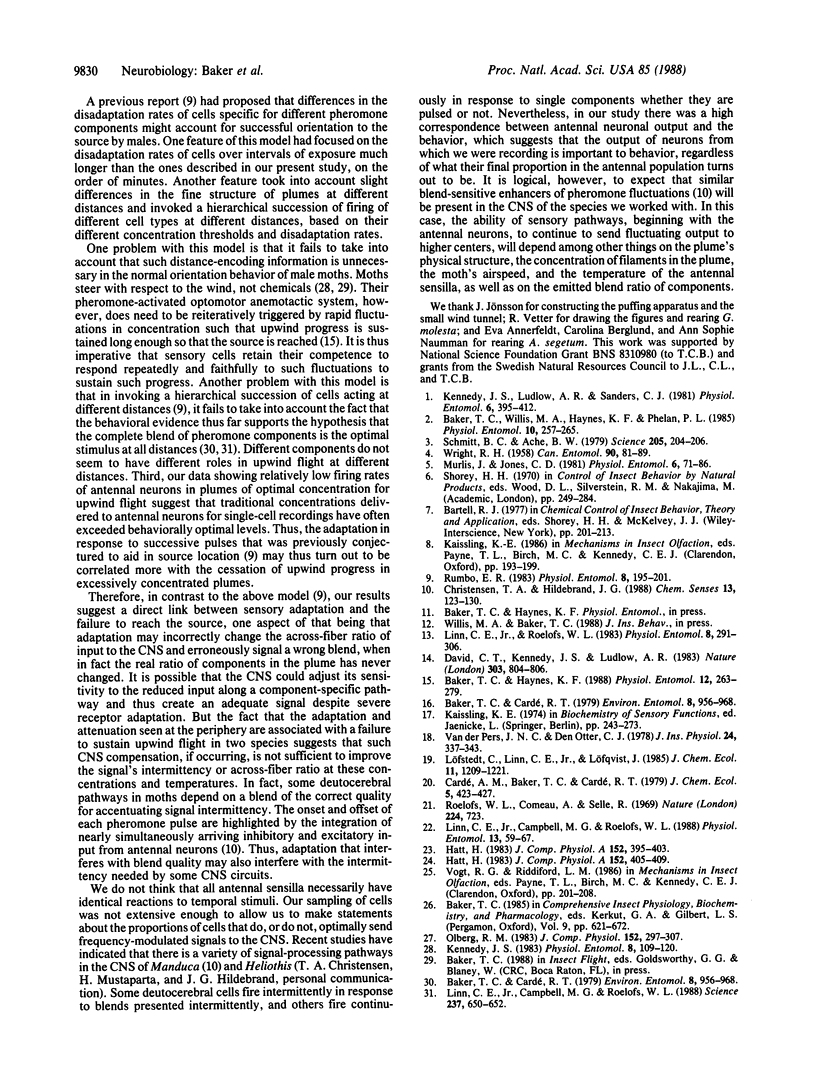
Selected References
These references are in PubMed. This may not be the complete list of references from this article.
- Linn C. E., Jr, Campbell M. G., Roelofs W. L. Pheromone components and active spaces: what do moths smell and where do they smell it? Science. 1987 Aug 7;237(4815):650–652. doi: 10.1126/science.237.4815.650. [DOI] [PubMed] [Google Scholar]
- Schmitt B. C., Ache B. W. Olfaction: responses of a decapod crustacean are enhanced by flicking. Science. 1979 Jul 13;205(4402):204–206. doi: 10.1126/science.205.4402.204. [DOI] [PubMed] [Google Scholar]


